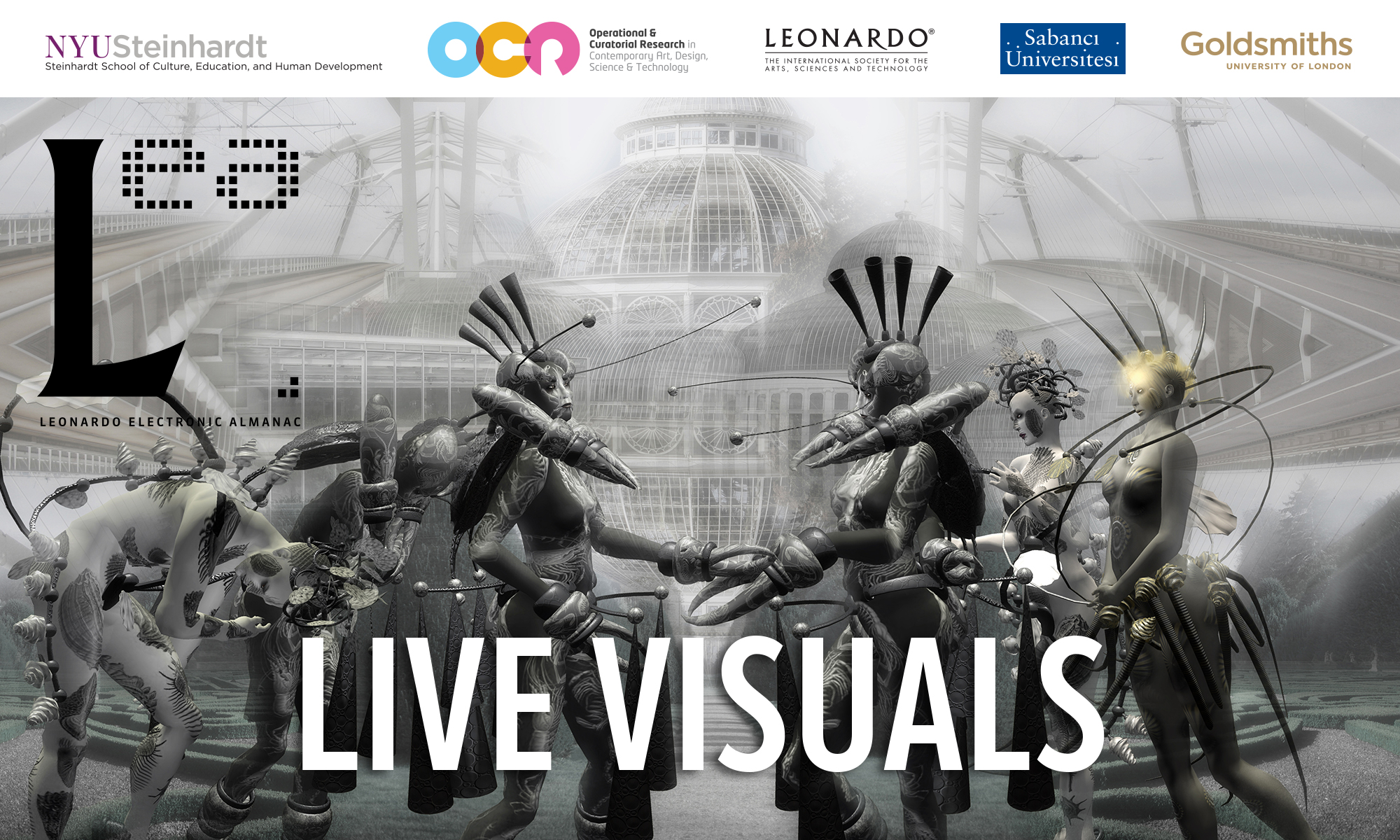
Live Visuals, Leonardo Electronic Almanac, Volume 19 Issue 3
ISBN: 978-1-906897-22-2
ISSN: 1071-4391
Volume Editors: Lanfranco Aceti, Steve Gibson and Stefan Müller Arisona
Editor: Ozden Sahin
When Moving Images Become Alive!
Editorial by Lanfranco Aceti
“Look! It’s moving. It’s alive. It’s alive… It’s alive, it’s moving,
it’s alive, it’s alive, it’s alive, it’s alive, IT’S ALIVE!”
Frankenstein (1931)
Those who still see – and there are many in this camp – visuals as simple ‘decorations’ are living in a late 19th century understanding of media, with no realization that an immense cultural shift has happened in the late 20th century when big data, sensors, algorithms and visuals merged in order to create 21st century constantly mediated social-visual culture.
Although the visuals are not actually alive, one cannot fail to grasp the fascination or evolution that visuals
and visual data have embarked upon. It is no longer possible to see the relationship of the visual as limited
to the space of the traditional screens in the film theater or at home in the living room with the TV. The
mobility of contemporary visuals and contemporary screens has pushed boundaries – so much so that ‘embeddedness’ of visuals onto and into things is a daily practice. The viewers have acquired expectations
that it is possible, or that it should be possible, to recall the image of an object and to be able to have that same object appear at home at will. The process of downloading should not be limited to ‘immaterial’ digital data, but should be transferred to 3D physical objects. [1]
[1] 3D printing the new phenomenon will soon collide with a new extreme perception of consumer culture where the object seen can be bought and automatically printed at home or in the office. Matt Ratto and Robert Ree, “Materializing Information: 3D Printing and Social Change,” First Monday 17, no. 7 (July 2, 2012), http://firstmonday.org/ojs/index.php/fm/article/view/3968/3273 (accessed October 20, 2013).
Full article is available for download as a pdf here.
Volume 19 Issue 3 of Leonardo Electronic Almanac (LEA) is published online as a free PDF but will also be rolled out as Amazon Print on Demand and will be available on iTunes, iPad, Kindle and other e-publishing outlets.
